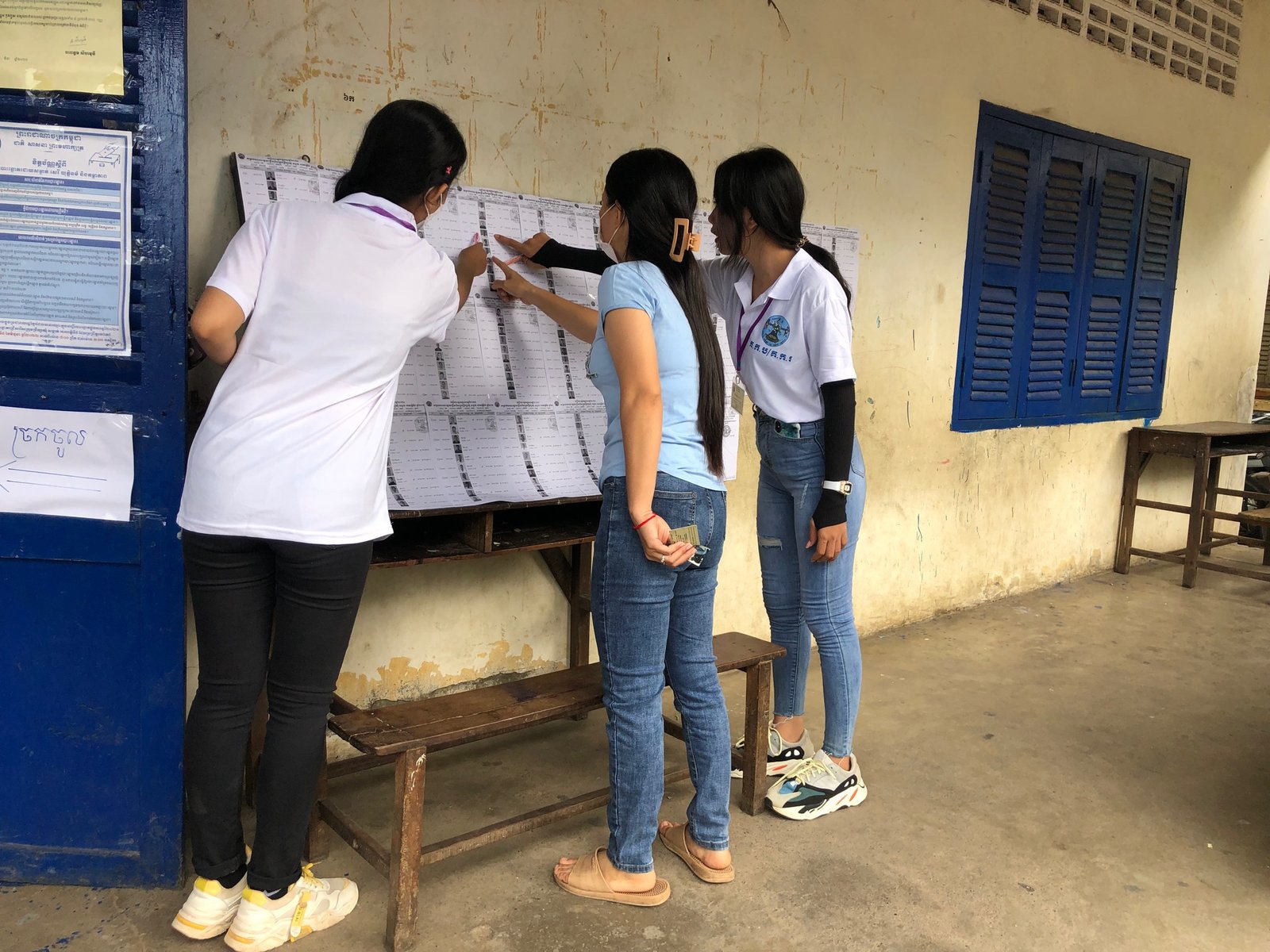Some 1,614 candidates from 18 parties will contest the July 23 vote, which continues to be skewed by gender disparities and imbalances between provinces. The ruling party has only 16 women candidates among its 125, while a vote in Kep or Pailin is three times more powerful than a vote in Phnom Penh.
Aging Candidates
Eighty percent of Cambodia’s population is younger than 48, while 56% is below 30, according to the 2019 census. Yet the ruling Cambodian People’s Party leans oldest among the allowed contesting parties, with its candidates most commonly aged 69 years old (14 individuals) and on average over 63 years old.
National Assembly president Heng Samrin is the oldest in the party — 89 as of election day — followed by Royal Palace Minister Kong Sam Ol at 86, according to official lists published by the National Election Committee.
Most other CPP top brass are in their 70s: Prime Minister Hun Sen at 70 as of the July 23 vote, Interior Minister Sar Kheng 72, and Defense Minister Tea Banh 77.
[Search through parties’ candidate lists on Kamnotra’s Ballot ’23 page.]
Behind them is the CPP’s so-called “new generation” in their 40s, including Environment Minister Say Sam Al (43), Justice Minister Keut Rith (44), Sar Kheng’s son Sar Sokha (42), Tea Banh’s son Tea Seiha (42) and Hun Sen’s sons Hun Manet (45), expected to take his father’s place as prime minister, and Hun Many (40), who serves as president of the CPP-linked Union of Youth Federations.
Two ministers — Finance Minister Aun Pornmoniroth at 57 and Telecommunications Minister Chea Vandeth at 51 — bridge the gap between the two generations, while the CPP’s youngest candidate is Kampong Thom’s sitting lawmaker Yim Leat, 36.
The Cambodian Youth Party, perhaps unsurprisingly, has the youngest candidates with an average age of 39, while the average among all parties is 48 years old — 15 years below the CPP’s average.
Several candidates from the Cambodia Indigenous Peoples Democracy Party, Cambodian Nationality Party, Democracy Power Party, Dharmacracy, Funcinpec, Khmer Anti-Poverty Party and Women for Women Party are 25, the youngest age among candidates, such as the Indigenous Peoples Party’s No. 1 ranked candidate in Banteay Meanchey, Toung Len. The Cambodian Nationality Party’s Chab Han is the oldest at 90.
Candidate Ages by Party
Candidate Ages by Province
Gender Disparity
Women’s representation in the National Assembly is backsliding. The CPP, which will win most if not all seats in July in the absence of its primary challengers, has selected only 16 women candidates out of 125, or 13% of the total.
That’s down from 26 sitting CPP women lawmakers. Currently, two of three Kratie lawmakers are women — an unusually high number nationwide. But the CPP put forward neither of them as candidates in 2023, instead making the province’s representation all-male.
Also absent from the list this time are all sitting women lawmakers from Battambang, Kampong Cham, Kampong Thom and Pursat. Phnom Penh also lost three of its five women lawmakers in the CPP’s latest candidates list.
In 2020, the National Assembly issued a report lauding the increase in the number of women lawmakers from seven in 1993 to 26 in 2018. It said the government’s strategy prioritized promoting women among leaders at national and sub-national levels.
“Promoting gender equality in leadership positions is a crucial catalyst to tackle inequality and alleviate poverty in Cambodia,” it said.
Among other parties, Funcinpec has less than 6% women while the Women’s Party for Women has 78%. Overall, 32% of candidates are women.
Women Candidates by Party
Women Candidates by Province
Unequal Votes
Cambodia’s National Assembly seat allocations have changed little since 1993. Kep, Oddar Meanchey and Pailin were newly added with one seat each, and Preah Sihanouk’s share expanded from one to three, growing the elected body from 120 to 125. Part of Kampong Cham was split into Tbong Khmum. All other provinces have remained the same.
However, between the censuses of 1998 and 2019, Phnom Penh has more than doubled in population — from 1 million to 2.3 million residents — while other large provinces like Kampong Cham, Kandal and Prey Veng have grown only 4 to 12%.
This means Phnom Penh has fewer seats per population than most other parts of the country, disenfranchising its voters.
Nationwide, there is around one National Assembly seat per 124,000 people. This makes Phnom Penh’s 12 seats proportionate to a population of only 1.5 million. For Phnom Penh to be fairly represented, it would need 18 seats in parliament.
By contrast, votes in small provinces count more, including Kep and Pailin which have a seat each for their populations of 42,000 and 75,000.
Click here to explore our ongoing database of election statements and information.

